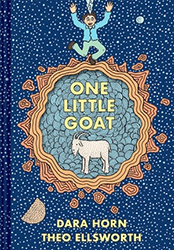Joe Kubert is well-known to readers of comic books; in his long career, he has drawn Tarzan, Hawkman, Batman and other superheroes, produced “Sgt. Rock,” and worked as editorial director at DC Comics. Kubert, along with the late Will Eisner, was one of the first authors to expand to a longer form of cartoons, now known as the graphic novel. Jewish themes are common in comic books and graphic novels; take for example Eisner’s Contract with God and his recent Fagin the Jew, as well as Art Spiegelman’s Pulitzer Prize-winning Maus, in which he recounts his father’s experiences during the Holocaust. Kubert also explored the Holocaust in his 2003 graphic novel Yossel: April 19, 1943.
Kubert’s newest offering in the graphic novel genre is The Adventures of Yaakov & Isaac, a collection of stories which were first published from 1984 – 1993 in the “Moshiach Times,” a magazine produced by the Lubavitcher Hasidim. Kubert, together with his advisor, Rabbi David Sholom Pape, selected the topics; he then illustrated each one using two observant brothers as the protagonists. The illustrations are reminiscent of mainstream comic books, with bold colors and large action-filled panels. Unlike those in mainstream comics, the message in each story is drawn from the Torah. Yaacov and Isaac face many tough situations, such as bullies who make fun of their yarmulkes and tzitzit, and rescuing a little boy who is trapped in a car; they also explore famous moments in Jewish history, such as the Warsaw Ghetto uprising and the Six Day War. Each story is preceded by a page of “Author’s Reflections,” in which Kubert provides background material as well as insights and morals that can be gleaned from the text. Following each story is an “Overview,” which reviews the lessons learned, as well as a series of “Questions to Think About.”
While many of the experiences of Yaacov and Isaac may be familiar to mainstream readers, observant readers will be most comfortable with the way these values are presented. The book could have benefited from a thorough editing job; there are many grammatical and typographical errors, such as when Isaac asks Yaakov to help him deliver matzah for “Peach” (sic). Librarians who serve observant populations will find this book useful to encourage boys aged 10 and up who are reluctant readers.





